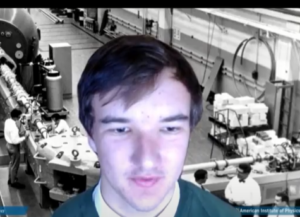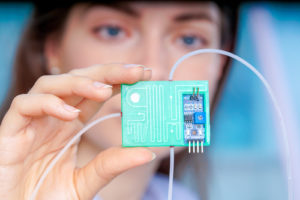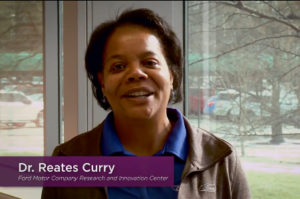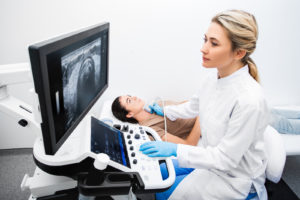Bioengineering or biomedical engineering is a discipline that advances knowledge in engineering, biology, and medicine — and improves human health. Biomedical engineers develop devices and procedures that solve medical and health-related problems by combining their knowledge of biology and medicine with engineering principles and practices.
Many do research, along with medical scientists, to develop and evaluate systems and products such as artificial organs, prostheses (artificial devices that replace missing body parts), instrumentation, medical information systems, and health management and care delivery systems. Biomedical engineers also may design devices used in various medical procedures, imaging systems such as magnetic resonance imaging (MRI), and devices for automating insulin injections or controlling body functions.
Insights from Medial Imaging Professionals
 The interviews were done by Hugo Currie as a year twelve high school student at the Riverina Anglican College in Wagga Wagga, Australia. He is passionate about physics and is now pursing a career in engineering and physics at the Australian National University. View the series of interviews that Hugo conducted with prominent physicists from around the world. Hugo is hopeful that other students with similar interests will be inspired from these conversations, and he thanks all of the physicists who gave of their time and wisdom in these interviews.
The interviews were done by Hugo Currie as a year twelve high school student at the Riverina Anglican College in Wagga Wagga, Australia. He is passionate about physics and is now pursing a career in engineering and physics at the Australian National University. View the series of interviews that Hugo conducted with prominent physicists from around the world. Hugo is hopeful that other students with similar interests will be inspired from these conversations, and he thanks all of the physicists who gave of their time and wisdom in these interviews.
What makes it unique?
Biomedical engineers work closely with physicians and others who provide healthcare to develop devices that have a direct impact on quality and length of human and animal life.
 Degree Connections
Degree Connections
The following are examples of some accredited degrees leading to a career in biomedical engineering:
- Bioengineering
- Biomedical Engineering
- Biomechanical Engineering
- Biochemical Engineering
- Biophotonic Engineering
- Mechanical Engineering
- Electrical Engineering
- Chemical Engineering
Search our global database of accredited engineering programs.
Want to learn more?
Click on the blue tabs to explore the field in more detail and learn about preparation and employment, the green tabs to be inspired by people working in biomedical engineering and how they impact the world, and the orange tabs for ideas on how to learn more and you can get involved with activities, camps, and competitions!
Explore
A Day in the Life

bigstock.com/Wladimir.B
Biomedical engineers work in conjunction with other specialists in healthcare on teams to address a problem or to improve a current medical product or system. Because the industries are so varied, where and how they work depends on the project. For example, a biomedical engineer who has developed an advanced prosthetic device might spend time researching those with the need, oversee prototype development, contribute to manufacturing management, and participate in testing.
They might work on a large team of professionals if the goal is a broad project, such as a new type of imaging device, or a smaller team if they are working to refine a smaller device or serving in a consulting capacity. They generally work in offices but fieldwork in medical settings is also a possibility.
Historical Snapshot
Pacemaker:
An artificial pacemaker is a medical device that generates electrical impulses that cause heart muscle chambers to contract to pump blood. For people with irregular heart rates or errors in the heart’s natural conduction system, these have made the difference between life and death! In 1958, Arne Larsson became the first to receive an implantable pacemaker. He had 26 devices during his lifetime. With bioengineering advances, current pacemakers can last decades and most batteries need replacing every 8 years or so. Even this is improving with technological advances.
The video to the right shows how the older pacemakers worked and the progress as new technologies have made them more comfortable, effective, and long-lasting.
Bioengineers continue to improve pacemakers…new wirelesses pacemakers are available which are 93% smaller than traditional ones. These are delivered via catheter direct to the right ventricle of the heart and they offer a 12 year battery life!Explore more pacemaker history:
Industries and Employment

bigstock.com/Richman Photo
Major advances in bioengineering include the development of artificial joints, magnetic resonance imaging (MRI), the heart pacemaker, arthroscopy, angioplasty, bioengineered skin, kidney dialysis, and the heart-lung machine.
With that broad list, which expands as technology improves, bioengineers work in a range of industries from medical equipment manufacturers to hospitals to research labs and organizations. They advise on many different products, even cars where equipment and displays have to be functional for the driver.
They often serve a coordinating or interfacing function, using their background in both the engineering and medical fields. In industry, they may create designs where an in-depth understanding of living systems and of technology is essential.
The following is just a sample of some companies, outside of government, so you can explore the type of projects worked on globally:
Preparation and Degrees
For most engineering careers:
- a bachelor’s degree is required
- a master’s degree may be recommended for those specializing or interested in management
- students may also start with a related associate degree and then move on to a bachelor’s when they have settled on a degree path.

bigstock.com/Sergey Nivens
- many students are required to participate in a co-op program while at university to gain real world experience in their chosen field.
- education doesn’t really stop…engineers need to stay current as technology changes and materials and processes improve over time.
- many professional societies offer certificates and coursework to support continuing education for their members
It is important to select an engineering degree that has been accredited to meet basic standards. Find out more and browse TryEngineering’s global database of accredited engineering and computing programs.
For bioengineering and biomedical engineering specifically, university students will often focus coursework on a chosen area, such as biomechanics, cell and tissue engineering, therapeutics engineering, computational and systems biology, or imaging and sensing. Some biomedical engineers also have advanced training in other fields. For example, many biomedical engineers also have a medical degree, so they can combine an understanding of advanced technology with direct patient care or clinical research.
Be Inspired
Amazing Engineers!
One of the best ways to explore what it might be like to work in Bioengineering is to learn about people currently working in the field.
- Bio-Medical Engineer Reates Curry describes her focus on biomedical engineering. She works at Ford Motor Company’s Research and Innovation Center where she applies her unique skills to help incorporate driver assistance devices to vehicles. She also encourages the student who interviews her to follow her dreams.

- Wilson Greatbatch, inventor of the artificial pacemaker explains that he credits his invention with pulling the wrong resistor out of a box! Find out about his life and how invention was his passion! He says all of life in experimentation.
- Ioannis V. Yannas developed the first commercially reproducible artificial skin. It was the first functioning organ that was developed, in response to solving the problem of repairing burn victims’ skin. He was shocked as the suffering of patients and it changed his career path. He believes in the virtue of failed experiments, and describes this life saving discovery.
- Bio-Medical Engineer Reates Curry describes her focus on biomedical engineering. She works at Ford Motor Company’s Research and Innovation Center where she applies her unique skills to help incorporate driver assistance devices to vehicles. She also encourages the student who interviews her to follow her dreams.
Global Impact: Prosthetics

bigstock.com/ master1305
A prosthesis or prosthetic implant is an engineered device that replaces or augments a body part. These body parts may have been missing since birth, lost from trauma, or need to be repaired due to disease. The designs may be customized such as an artificial leg, but are generally based on broadly used and accepted designs. As technology advances, the functionality of the device can improve and bring it closer to matching the original body part.
Consider limb prostheses which originally were made from wood and strapped on to a person when needed. Now, they can be directly attached to the bone, and have allowed for runners and other athelets to continue to compete in their sport of choice. The goal of all prosthetics is to allow the person to resume their lives and have a good quality of life.
Prosthetic hands have historically been available in voluntary opening and closing versions…but recent technology has made robotic hands and integrated forearms available.
In the video to the right, see how Colorado University Boulder biomedical engineer Jacob Segil is working to bring back the sense of touch for amputees, including military veterans.
Get Involved
Keep Learning
Dig deeper into topics related to biomedical and bioengineering that interest you!
Explore:
- National Institute of Biomedical Imaging and Bioengineering
- History of The Prosthetic Leg Through The Ages
- TryEngineering News Blog
Watch:
Advances in Biomedical Engineering (IEEE Engineering in Medicine and Biology Society)
Try it Out:- Play some games that involve bioengineering!
- Try one of the TryEngineering lessons that focus on bioengineering:
Competitions and Events
Clubs, competitions, and camps are some of the best ways to explore a career path and put your skills to the test in a friendly-competitive environment.
Clubs:
- Many schools have developed bioengineering clubs to encourage preuniversity students to gain experience to help their future education and careers. See if your school offers such a club or if there is a regional option. An example is the JLHS Bioinformatics and Biomedical Engineering Society.
Competitions:
- International Genetically Engineered Machines (iGEM) competition: an annual, worldwide synthetic biology event aimed at preuniversity, undergraduate and graduate students to push the boundaries of synthetic biology by tackling everyday issues facing the world.
- BME-Idea Competition: offers university biomedical entrepreneurs the chance to win up to $10,000 and receive critical early-stage validation of their ideas. Students are challenged to pioneer a health-related technology that addresses a real clinical need.
- RESNA – Student Design Competition is open to undergraduate or graduate students to create an innovative design that will assist an individual with a disability to function more independently.
Camps:
- TryEngineering Summer Institute: Attend the TryEngineering Summer Institute to further your core engineering skills.
- University of Pittsburg Bioengineering Summer Camp – one-week summer camp that submerses them in bioengineering and regenerative medicine
- Columbia University offers a pre-college program for students entering grades 9–12 who are interested in intensive summer study. The program covers all areas of academic study, including a course hosted by the Department of Biomedical Engineering.
Many universities offer summer engineering experiences. Reach out to your local university’s engineering department to see what they offer.
Local Connections

bigstock.com/dashkindobrui
Did you know you can explore bioengineering in your community? Consider the imaging done in hospitals including ultrasound, MRI and other medical imaging techniques. Likely someone you know, or someone in your community, has undergone a scan to examine some part of their body. Scans are used to look for cancer, determine how bad a torn ligament might be, or to research medical applications.
- At your local hospital, what medical imaging options are provided? What teams of people use and evaluate the scans to provide information to the patient?
- How do you think an ultrasound works? What about an MRI or a CT Scan? What are the differences? When would one be a better choice than another for a patient? Consider a patient with lots of prosthetic metal implants? Is there a scan technique which would not be recommended for them?
- In addition to biomedical engineers, what other engineers do you think would have worked on the development of a new ultrasound machine?
Find out more:
Groups and Associations
Be sure to reach out to professional societies focused on engineering where you live. Not all will offer membership to pre-university students, but most offer groups for university students, and certainly offer online resources to help you explore the field. Some examples of groups focusing on bioengineering:
- National Institute of Biomedical Imaging and Bioengineering, US
- IEEE Engineering in Medicine and Biology Society
- ASME, Bioengineering Division
- Biomedical Engineering Society
- Danish Society for Biomedical Engineering
- European Society for Engineering in Medicine
- International Federation for Medical & Biological Engineering
- The Canadian Medical & Biological Engineering Society
Some resources on this page are provided or adapted from the US Bureau of Labor Statistics and the Career Cornerstone Center.



